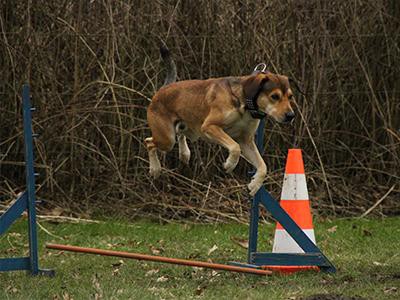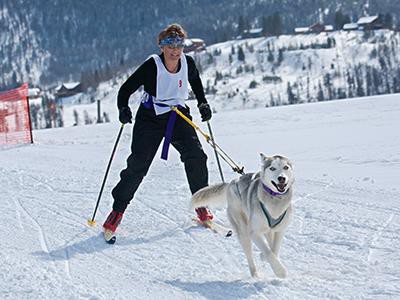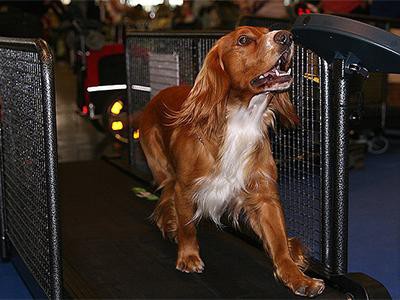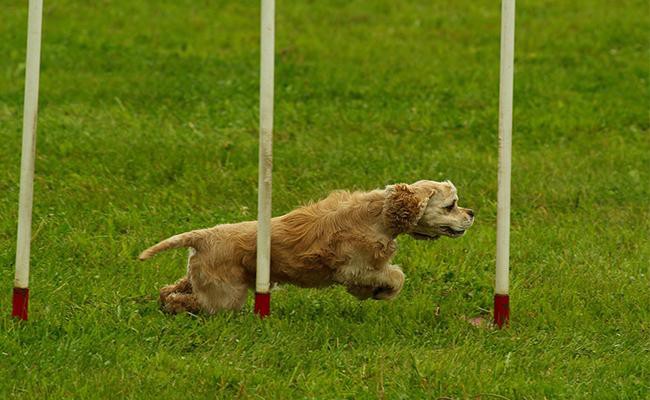Dog Pregnancy Calculator And Timeline
Are you aware of dog exercises every dog owner should know? Dogs are born athletes. They have happily worked alongside humans since time immemorial. Most of them were bred for activities including providing protection, herding livestock, and hunting.
The most well-known exercise for our dogs, at present, is Couch Potato. Nowadays, dogs get their food without batting an eyelid and are mostly inactive, alone, and are confined to a small space.
Active dogs like Brittany may experience mental stress or disorder if adequate exercise is not provided regularly.
This lack of work causes behavioral problems. Dogs also suffer from a lack of chances to exercise. Remember, the one and only interaction that count is the dog’s interaction with you.
Dog Exercise Programs
Before we actually get to know about various dog exercise programs, let’s understand more about exercise in particular.
Side-effects that Result from Lack of Active Play and Exercise
Dogs can behave like small kids. If you don’t make them do something valuable, they will do something messy and irritate you.
Find out about some of the famous behavior issues witnessed in dogs include
- Attention-seeking activities like whining.
- Playing hard and rough.
- Excessive social play and predatory.
- Jumping up on strangers and family members, displaying uncouth behavior, and running over furniture.
- Night-time interaction, excitability, and hyperactivity.
- Raiding garbages.
- Destructive scratching, digging and chewing.
Advantages of Play and Exercise
The main point is that exercise and training provide a lot of benefits to your dog. They include
- Enables the dog to maintain their weight under check.
- Promotes proper and fixed sleep time.
- Fearful or timid dogs gain strength and confidence.
- Reduces constipation and digestive troubles.
- Useful for keeping the dogs active, agile, and happy.
- Eliminates common problems such as hyperactivity, chewing, unwanted barking, and digging.
Things to keep in mind before starting the dog exercise program
- Contact your vet and some age, dog breed, and size factors include-
- Whippets and hounds like Greyhounds are best mainly for short-distances.
- Avoid continuous running or jogging for juvenile dogs who have not reached full development.
- Dogs are susceptible to diseases like hip dysplasia, arthritis, and cruciate ligament injuries.
- Brachycephalic breeds are known to suffer from troubled breathing.
- Corgi breeds like Cardigan Welsh Corgi or short-legged dogs need very less walking in general.
- Terrier Dogs like Cairn Terrier, Boston Terrier, etc., have mediocre energy levels in terms of activities.
- Great Danes, Doberman pinschers, and German shepherd dogs can suffer from a bloat. Handle them with extra caution and talk to your vet before starting an exercise.
Effective Dog Exercises
- Try following your dog – Why not try something new? Instead of making your dog walk, have your lead you. Just follow your dog. Shed all your fears and simply just travel with her. In the end, you will feel a lot fitter and happy.
- Run, run, and run – Nothing can beat the joy of running alongside with your dog. Running also improves muscle strength and stamina. Remember this small tip. You should be always ready to stop when your dog wishes to stop.
- A flyball looks cool – Flyball is not only is a terrific high energy activity but a team sport. In this event, dogs cross a course, which contains at least 4 hurdles. The dog must carry a tennis ball while crossing all the hurdles. Once the first dog reaches the initial point, the second dog takes off. There are penalties for dropping the ball etc.
- Agility class – If you feel your Tommy has plenty of energy, enrol your dog in an agility class. The agility dog exercise program not only increases the skill set and confidence, it’s a good exercise for your dog.
- Scent trail program – Every dog can take part in a scent trail tracking competition. Trails start hours before the competition. The main aim is to find a hidden object at the trailing end.
- Game of fetch – A small game of fetch is very easy to insert into a busy A nearby ground or a park works well on rainy days. The fetch game can also be played from the comfort of indoors.
- Natural play – The most fun forms of exercise include the daily activities they perform. If you notice a pack of dogs, they expend their energy in the way they want.
- Stimulate your dog’s brain – Do not forget to train your dog’s brain. Cognitive issues tend to stop after basic obedience and puppyhood. Teach your dog something crazy such as bowing or high fiving.
- Nose work – Nose work activities take advantage of a puppy’s innate scent capacity. The simple activities include finding unique treats hidden inside a cupboard or a box. Not only this activity work as a brilliant exercise as it takes your dog from one location to another. Nose work activity improves your dog’s confidence and mental strength as well.
- Dance is also an exercise – You can also try freestyle steps to show off your creativity in competition. Taking your dog for a daily walk is not a bad concept. Trying out something fresh and new can turn your dog into a more confident and lively animal. They, in turn, would shed more pounds in a short duration.
- Swimming
Some fun and exciting tips- Train your puppy to get into the water as soon as possible. This will improve her confidence. Irrespective of your dog’ s breed or age, start with shallow water.
- Keep her on a leash; wade in your dog. Motivate her with reward.
- Always keep your dog under the supervision and never allow her to enter deep waters.
- Some dogs will try to rest on their owner’s shoulder or head. Be vigilant.
- Avoid water currents at any cost.
- Never take your dog into deep water or lake.
- Make your dog wear a canine life vest.
- Shellfish, dead fish, and faeces all contain parasites and toxins.
- Let your dog have simple access to shade. You can avoid heat stroke and exhaustion by taking necessary steps.
- Keep your dog’s paws and their ears clean in order to avoid water-borne diseases or infections.
- Heavy or soft coat dogs such as shepherds, collies, and retrievers can trap bacteria in areas known as “hot spot.”
- Teach your dog the how to exit from a swimming pool. Use pools having graded steps because dogs can drown if they are unable to reach the exit.
Dog Exercise Equipment
Hot examples of Dog Exercise Equipment
We have displayed five hot examples of simple and effective dog exercise equipment that will push your doggie into shape.
Adjustable Jump Bars

These dog exercise equipment are apt for strength and endurance. In this, the dog owner can arrange the bar as low or as high as necessary. When the dog feels assured to jump higher and the pet owner gives him treat to motivate the dog’s confidence in using these bars.
Skijoring

In this sport, a dog pulls a person wearing skis. Skijoring originated in Scandinavia, and this sport came into existence when dog sledging and cross-country skiing were combined.
A dog wears a harness to pull the skier. In warmer months, both owners and dog use skijoring equipment for inline skating and roller skiing.
Agility course

Also called an obstacle course, an agility course is, ideal because it consists of various pieces of dog exercise equipment used to perform an exercise regimen.
Your doggie will pass through and cross obstacles and will be checked for her time and speed she reaches the finish line. They include items very easy to sources such as a tunnel, a teeterboard, and a tire jump.
If you are working on a constrained budget, you can build your own agility course.
Exercise Ball

These balls are ideal for rehabilitation centres, Pilates classes, and for yoga. They enhance the core strength of your dog too. Exercise balls increase your dog’s control, reaction, and balance.
Balls like Best Ball and Boomer Ball comes in various sizes and shapes. Dogs also love to play with KONG toys.
Treadmills for dogs

Latest treadmills are convenient for cats and dogs to exercise. With a treadmill, your dog can improve her lifespan, tone up, and increase her muscle strength by using it on a frequent basis.
They are suitable to remove a dog’s extra energy. Introduce her to walk slowly on the machine and teach her to exit via the opposite side. Start with very slow speeds and over time, your dog will naturally run on the treadmill with ease.
Dog Exercise Calculator
1. How much exercise a puppy needs?
Puppies need more exercise than adult dogs in short.
Several play sessions and quick walks all through the day is not a bad idea.
The more time your pup spends with you, the more information you can gather.
Contact your breeder and bear in mind that exercise looks great.
2. How much exercise an adult dog needs?
High energy dog breeds such as Belgian Malinois and Border Collies need a lot of play time than a Basset Hound in general. Avoid buying an active breed unless you lead a very active and healthy lifestyle.
3. How much exercise a senior dog needs?
As the dog’s age, they will tire more quickly. Joint supplements can definitely help your pet to some extent. Senior dogs require around half-an-hour to one-hour exercise session daily ideally split into two periods.
4. Mental Training for all dogs
Most dogs in older age require more mental activities than physical. Some examples of mental stimulation include
- Maintain good quality time and keep eye contact with your dog
- Try treasure hunt or nose work
- Obedience training
- Interactive mind stimulation toys
Dog Breed Exercise Chart
Dog breed and size are two important things in deciding what kind and how much exercise your dog needs.
Some breeds need more exercise.
| Dog Breeds - In General | Energy Level |
|---|---|
| Vermin Hunters | Medium to high |
| Toy Breeds | Low |
| Spaniels | High |
| Draft Dogs | Medium to high |
| Sheepherders | Medium to high |
| Setters | High |
| Scent Hounds | High |
| Retrievers | High |
| Waterdogs | Low |
| Pointers | Very high |
| Large-game dogs | Medium |
| Guard dogs | Medium |
| Fight dogs | Medium |
| Dalmatians | Very high |
| Working Dog Breeds | Energy Level |
|---|---|
| Dobermann | High |
| Boxer | High |
| Siberian Husky | High |
| Saint Bernard | Medium |
| Sheepherders | Medium to high |
| Rottweiler | Medium |
| Newfoundland | High |
| Pastoral Dog Breeds | Energy Level |
|---|---|
| Samoyed | High |
| German Shepherd | High |
| Welsh Corgi | Medium |
| Shetland sheepdog | Medium |
| Old English Sheepdog | Medium |
| Rough Collie | High |
| Border Collie | High |
| Toy Dog Breeds | Energy Level |
|---|---|
| Yorkshire Terrier | Low |
| Pug | High |
| Pomeranian | Medium |
| Pekingese | Medium |
| Papillon | Low |
| Maltese | Low |
| Chihuahua | Low |
| Utility Dog Breeds | Energy Level |
|---|---|
| Shih Tzu | Low |
| Poodle (mini) | Medium |
| Japanese Spitz | Medium |
| Dalmatian | High |
| Terrier Dog Breeds | Energy Level |
|---|---|
| Wheaten Terrier | Medium |
| West Highland Terrier | Medium |
| Scottish Terrier | Medium |
| Kerry Blue | Medium |
| Jack Russell Terrier | Medium |
| Cairn | Medium |
| Airedale | Medium |
| Gun Dog Breeds | Energy Level |
|---|---|
| Cocker Spaniel | Medium |
| Springer Spaniel | Medium |
| Pointers | High |
| Labrador Retriever | High |
| Irish Setter | High |
| Golden Retriever | High |
| Hound Dog Breeds | Energy Level |
|---|---|
| Whippet | Medium |
| Norwegian Elkhound | High |
| Irish Wolfhound | High |
| Greyhound | High |
| Dachshund | Low |
| Beagle | High |
| Basset Hound | Medium |
| Frequency | Energy Level | Amount Of Exercise |
|---|---|---|
| Min 1 or 2 times a day | Low | 10 mins |
| Min 2 times a day | Medium | 20 mins |
| Min 3 times a day | High | 20 to 30 mins |
| Min 4 times a day | Very high | 30 mins to 60 mins |




















